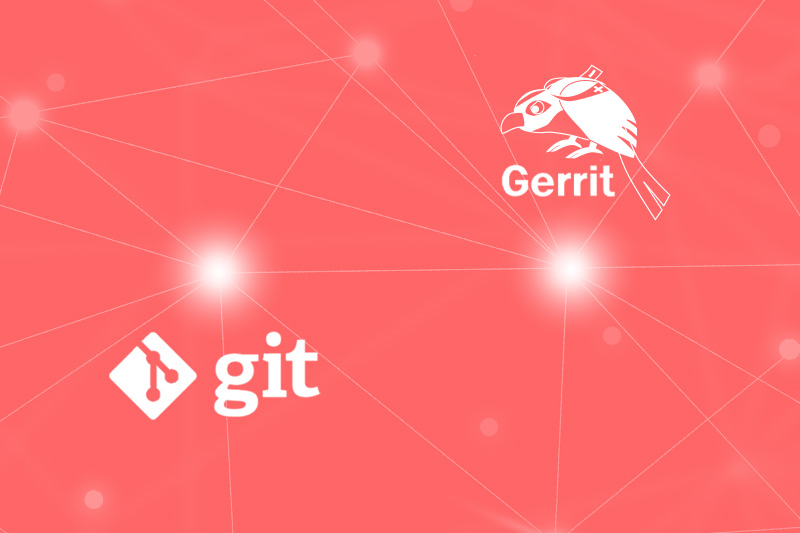
In the last decade, the DevOps approach has emerged as an improvement, providing software developers with amazing solutions to organize their codes. At its core, DevOps is about overcoming obstacles between development and operations teams, fostering collaboration, and automating key processes throughout the software development lifecycle. Acquiring excellent knowledge and skillfully using tools like Git and Gerrit is a key step towards achieving continuous integration and continuous delivery (CI/CD).
Regarding continuous integration and development, we had a conversation with Miloš Mišić, an instructor at NIT Academy, who provided insights into the demand of IT companies for individuals proficient in the Git and Gerrit methodology.

Important Roles of Git and Gerrit in Software Development
DevOps is a transformative philosophy that places automation at its heart. Automation is the key to achieving the goals of continuous integration and continuous delivery, and DevOps practices underscore the need for it at every stage of the software development pipeline.
Continuous Integration involves the seamless integration of code changes into shared repositories. In the DevOps realm, automation takes center stage, streamlining the process of integrating code from multiple developers. Automated tests ensure the reliability of the integrated code, paving the way for more frequent releases. With DevOps, the entire development process becomes a carefully coordinated approach of automation and continuous testing.
Speaking of Git’s role in DevOps - this distributed version control system plays an very important role in the DevOps process. “It serves as the backbone for source code management, enabling developers to track changes, collaborate on development, and maintain a comprehensive history of modifications,” said Miloš. Git's decentralized nature allows developers to share their work seamlessly, making it a vital tool for achieving continuous integration.
Our instructor also explained the biggest differences between Git and Gerrit. While Git only manages source code and tracks changes, Gerrit introduces a web-based layer that adds a crucial dimension: code review. Git commits can be shared with others, but Gerrit takes this a step further. Developers submit their changes to a web server, allowing for a comprehensive code review before the changes are merged into the remote repository. This distinction emphasizes the importance of not just code management but also the quality assurance aspect in the DevOps pipeline.
There are also some advantages of both Git and Gerrit. What differentiates Git is its Efficient Version Control: Git allows developers to save and manage multiple versions of their work effortlessly. The second thing is Branching Strategies. Developers can create branches to experiment with new features without affecting the main codebase.
On the other hand, Gerrit allows Code Review. Gerrit introduces a crucial layer of code review, improving overall code quality through collaboration and feedback from other developers on the project.

Acquire widespread knowledge of Git and Gerrit at NIT Academy
As our instructor pointed “DevOps is not a fleeting trend. It's a set of principles designed to be a great framework for continuous integration and development of softwares. Fundamentals of DevOps, including those related to Git and version control, remain relevant and applicable today.” Also there are no strict standards, only good practices that should be followed in order to maintain the best possible outcome for your project. For example, code reviews are recommended, and commit messages should follow guidelines. “While some companies may prioritize speed over thorough code reviews, the essence of Gerrit lies in its ability to facilitate constructive feedback and improvements.”- Miloš added.
NIT Academy’s GIT Gerrit course teaches participants all those best practices which have proven to be very useful over many years of our experience. In a DevOps environment, effective use of Git and Gerrit reflects on following best practices such as:
- Continuous Integration and Testing - Leverage the power of automation to ensure that every code change is rigorously tested.
- Frequent Releases - Leverage the efficiency of Git and Gerrit to enable more frequent and reliable software releases.
- Code Review Culture - Embrace a culture of collaborative code review, leveraging the capabilities of Gerrit to enhance code quality.
We also pay special attention to teaching our participants relevant commands for navigating the Git landscape. Based on our experience, understanding these Git features is crucial for mastering the DevOps workflow:
- Commit: Capturing changes made to the code.
- Branch: Creating new branches for parallel development.
- Checkout: Switching between branches.
- Merge: Combining changes from different branches.
- Rebas: Incorporating changes from one branch into another.
- Cherry-Pick: Selectively applying specific commits.
- Reset: Undoing changes in the working directory.
For those starting a career in software development, it's essential to have a great understanding of Git. The instructor pointed out that GitHub and Bitbucket are popular platforms where developers demonstrate their Git skills by building a digital portfolio that highlights their ability to collaborate and manage versions of code. “In NIT academy, we offer a great foundation for understanding Git and Gerrit. You can then easily shift to any other version control system or any other code review platform which your company or a project demands.” - said Miloš.

To sum it up: Aspiring software developers, take note – Git and Gerrit's knowledge isn't just a feather in your cap. It's the cornerstone of a DevOps-centric career. The ability to navigate the Git environment and comprehend the intricacies of code review using Gerrit sets the stage for a successful journey in the dynamic world of software development.
Become proficient in the Git/Gerrit methodology and prepare for the challenges posed by the dynamic pace of software development. Enroll in our GIT Gerrit course today!



